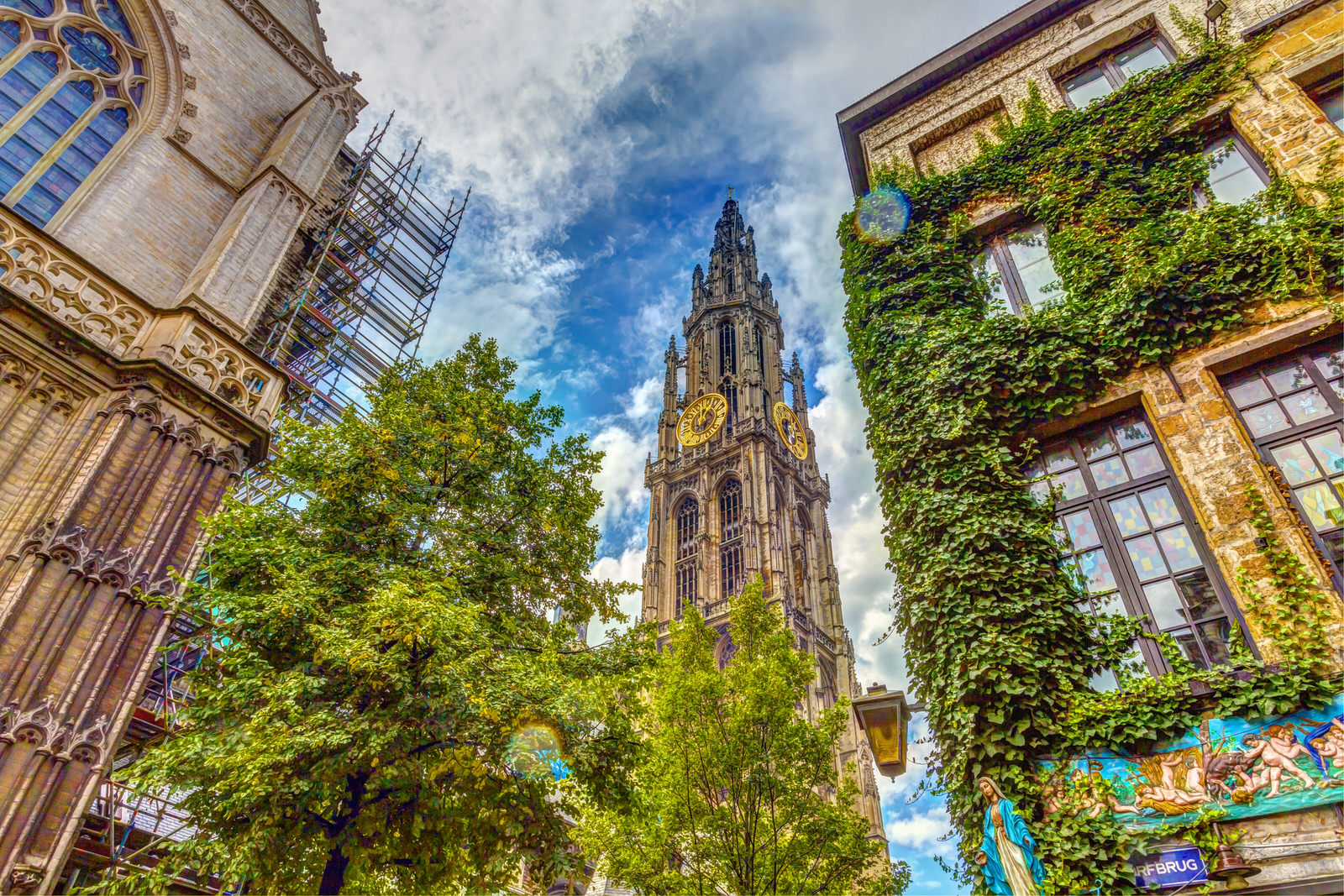Once inside, visitors are usually stunned by the unique architecture, its harmonious dimensions, and the way the light streams in. But the Cathedral of Our Lady is so much more than a Gothic gem. Antwerp’s church community and historic events in the city have also left their mark on the interior of this place of worship through the centuries. As such, the Cathedral bears witness to the organic growth of a society and a religious community, starting from the late Middle Ages, over the Baroque and the neo-Gothic, to the present-day.
A cultural high point in this history is Peter Paul Rubens, the great Flemish Baroque painter. The Cathedral is home to four of his masterpieces, including The Elevation of the Cross and The Descent from the Cross. A lesser-known but equally interesting work is the epitaph he painted for Jan Moretus and Martina Plantin, in which The Resurrected Christ looks resplendent as He rises from his tomb. The Assumption of the Virgin Mary can be found in the building’s central nave. These four paintings, which were created between 1609 and 1627, provide an excellent overview of the evolution of the Antwerp master’s art and style. Moreover, this collection is surrounded by other paintings by important predecessors, including Maarten De Vos and Otto Venius, and followers of Rubens, such as Cornelis [GH1] Schut, who painted the tondo or round painting in the beautiful lantern tower.
Although the Cathedral’s Trustees continuously invested in innovative, contemporary art over the centuries, their interest waned in the 20th century, when the gap between the arts and the world of the Church became too wide. In 2015, however, the current Trustees picked up where their predecessors left off. The result is a series of striking contemporary additions to the Cathedral’s art collection. The Man who Bears the Cross by the Antwerp artist Jan Fabre invites visitors to live a balanced Christian life. Sam Dillemans, another Antwerp artist created Tribute to Rubens: The Descent from the Cross, a visceral interpretation of the 17th-century masterpiece alongside. Finally, the Catalan artist Javier Pérez created Corona in 2012 – long before the coronavirus pandemic, in other words. The fragile structure represents the suffering and resurrection of Christ.
Music is an art form that requires permanent creativity. Currently the Cathedral employs three professional musicians. They fill the space with old and new religious music, playing the Baroque Metzler organ or the romantic Schyven organ during worship.
In addition to being a treasury of history and culture, the Cathedral is also the home of the Catholic community of the Diocese of Antwerp. The Cathedral respects all religious and ideological backgrounds. At the same time, it also invites visitors to reflect on the bigger questions of life and acquaint themselves with Jesus Christ, who wants to be a source of hope and peace for all.


